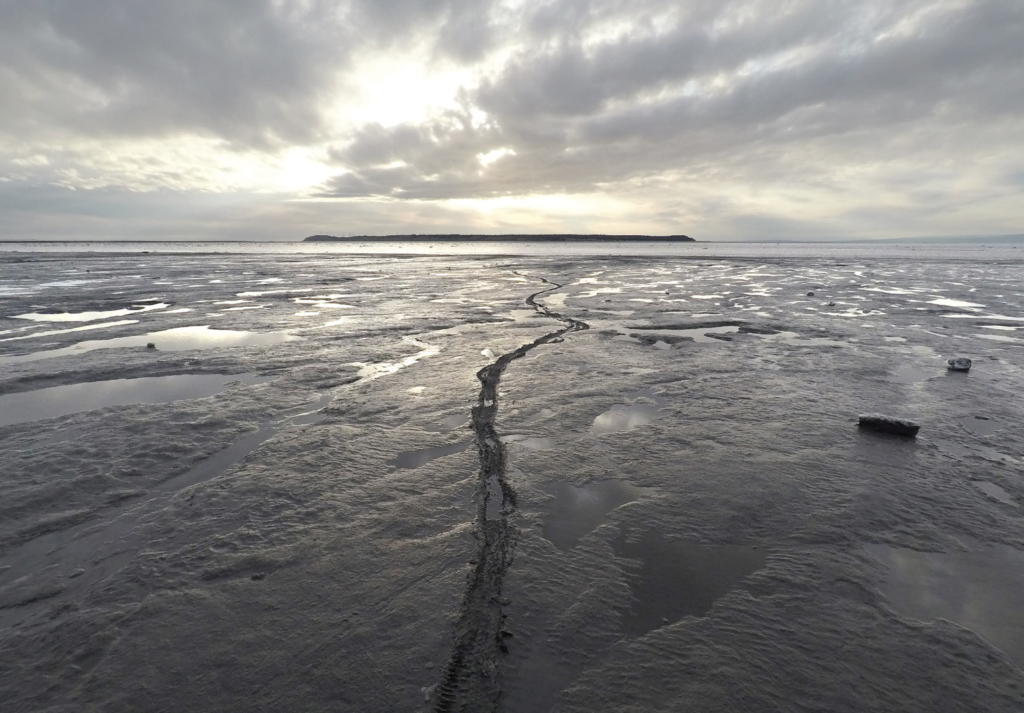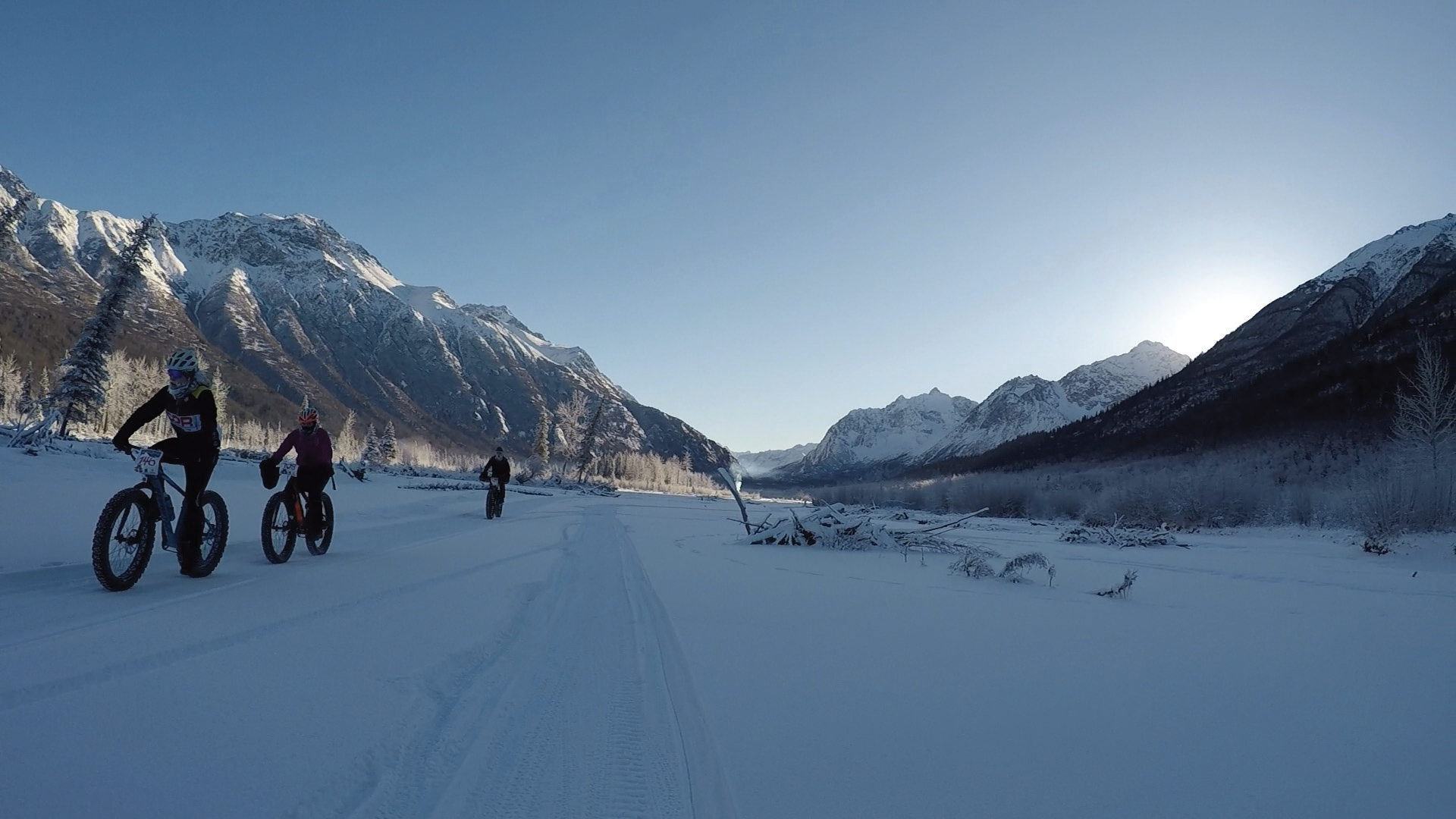This content has been archived. It may no longer be relevant
Joe Redington Sr.’s idea for a winter cycling race leads to modern fatbikes
It may be difficult to imagine someone so deeply rooted in Alaska culture as Joe Redington Sr., the father of the Iditarod, would have had anything to do with the now extensive milieu that encompasses Alaska’s fatbiking scene. In 1986, he suggested the cycle group Mountain Bikers of Alaska race on a ski course that follows the famous Iditarod Trail, as reported by to Jill Homer’s article in Half Past Done blog. What happened next is a race for human innovations tied to conquering tough winter elements and the birth of the modern fatbike.
Redington Sr.’s race became known as the Iditasport or Iditabike race. Since then, the Susitna 100 and the Iditarod Trail Invitational have continued in the spirit of the original race. Many shorter races and group rides such as the Icy River Rampage and the Big Fat Ride have also emerged for the average rider.
To meet the challenges and demands of longer races, mountain bikers began modifying their bikes with racks, panniers and sleds to haul the gear necessary to camp in the winter conditions of interior Alaska. As the races continued, the cyclists’ modifications improved.
University of Alaska Anchorage student Steve Baker of Alaska’s Icicle Bicycles began welding conventional mountain bike wheels together and modifying their frames in 1988 in Alaska. This innovation is one of the original prototypes for the fatbike we know today.
Other predecessors of fat bikes emerged in the early 1980s in an attempt to ride on sand. Bike builders in Colorado, California and New Mexico began adding multiple gears to single-speed cruisers. New Mexico bike builder Ray Molina welded two Snowcat rims and stitched two tires together, making them four inches wide. These bikes, with their balloon tires, long wheelbases and swept-back handlebars resembled a 1960s Schwinn, observed Nicholas Carman in Adventure Cyclist magazine.
John Evingston attended the Interbike bike show in 1999 where he and Mark Gronewald, a bike builder from Palmer, first saw Ray Molina’s sandbike.
The pair became inspired to built bikes with lowered chainstays and with rear wheels that were offset 18-millimeters from the frame in order to maintain the chain clearance of the tire, as reported by independent Alaska journalist Craig Medred.
Cycle innovator Simon Rakower’s 44-millimeter wide SnowCat fat-tire wheels were developed and produced in the early 1990s. The rims could seat 3.5-inch tires. These wheels could be mounted on conventional mountain bikes, which made them similar to today’s plus bikes.
The success of these innovations inspired larger bike manufacturers like Surly to introduce bike frames into mass production that could mount tires up to five inches wide, according to Charlie Kelly of Cyclist Magazine. Fatback and 9:ZERO:7 began producing lighter fatbikes for better flotation, a term that describes how a bike rides over soft surfaces.

Worzonof mudflats in April.
In 2016, Alaska ranked sixth nationally in the number of residents per capita who commute to work on bikes, as reported by the League of American Bicyclists. Winter weather, trail and road conditions don’t slow riders down. Anchorage cyclists continue to get out and ride in increasing numbers throughout the year. Many cyclists have found that fatbikes are a useful addition to the scene.
“It’s just a different way to enjoy trails,” said Kelly Harper, an Anchorage cyclist who made the switch to the larger wheels and tires in her 40s. “I got my first fatbike when winter looked more [like] ice than snow in Anchorage, and I still wanted to get out on my days my cross-country skis didn’t suit trail conditions.”
Kirk Gibson, an Anchorage resident and fatbike rider became interested in the activity after he became bored with classic skiing. He takes advantage of fatbiking technology to help ride year-round.
“I take the studs off to ride with my family in the summer,” Gibson said. “My youngest one can’t ride as fast, so the fat tire bike provides a slower but super comfortable ride on all the trails we do.”
Fatbike riding is now widespread across northern latitudes in several countries. The fatbiking community owes an Alaska-sized thank you to Joe Redington Sr.’s idea of a second Last Great Race, that sparked a rush for innovation.
Editor’s note: This article was edited on May 7, 2018 to correct a factual error about who attended Interbike in 1999.
Lucas Wright is a journalism major at UAA with junior standing. Lucas emphasizes in print and digital media, and he is interested in anthropology and public policy. Lucas has been an avid cyclist for several years and enjoys long-distance mountain biking and fatbiking.


Your link to my article goes to a subscription page for a magazine with a name similar to one I once wrote for.
Here is a link to my Iditabike stories.
http://www.sonic.net/~ckelly/Seekay/iditabike.htm